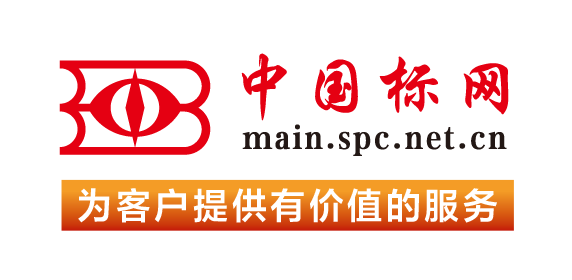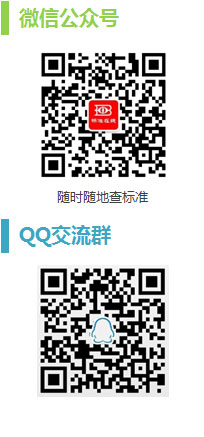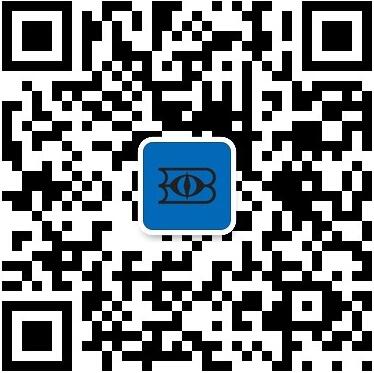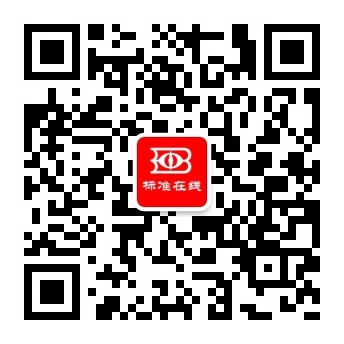2007 NESC bundled with 2007 NESC Special Edition VuSpec CD-ROM: 2007 NESC: This standard covers basic provisions for safeguarding of persons from hazards arising from the installation, operation, or maintenance of 1) conductors and equipment in electric supply stations, and 2) overhead and underground electric supply and communication lines. It also includes work rules for the construction, maintenance, and operation of electric supply and communication lines and equipment. The standard is… read more applicable to the systems and equipment operated by utilities, or similar systems and equipment, of an industrial establishment or complex under the control of qualified persons. This standard consists of the introduction, definitions, grounding rules, list of referenced and bibliographic documents, and Parts 1, 2, 3, and 4 of the 2007 Edition of the National Electrical Safety Code. 2007 NESC VuSpec CD-ROM: You get the complete 2007 NESC in a new point-and-click HTML format as well as the official 2007 NESC in the Classic Adobe PDF format. With internet access, you get exclusive hyperlinks to essential resources including the IEEE Electrical Safety Resource Center, the NESC Zone, and so much more. New search, linking, and navigational features are available to assist you! No more thumbing through hundreds of pages for cross-referenced material. Just click! Rules are linked together enabling you to move forward and back as you like. Jump to any table in feet or meters with ease. View color-coded changes from the 2002 NESC, copy and paste an important passage, print pages on your inkjet or laser printer. Not satisfied with the size or color of the text Change it. VuSpec is customizable. Starts immediately, no installation or login required. Also includes the NESC Glossary, just key in a term and see its definition. read less
This document deals with the tool capabilities and methods for model-based systems and software engineering (MBSSE). This document:--specifies a reference model for the overall structure and processes of MBSSE-specific processes, and describes how the components of the reference model fit together;--specifies interrelationships between the components of the reference model;--specifies MBSSE-specific processes for model-based systems and software engineering; the processes are described in terms… read more of purpose, inputs, outcomes and tasks;--specifies methods to support the defined tasks of each process;--specifies tool capabilities to automate or semi-automate tasks or methods. This document does not bring any additional life cycle processes for system and software but specifies an MBSSE reference model considered as activities, not only from the life cycle perspectives of systems engineering problem solving and the system-of-interest evolution, but also from the cognitive perspectives of modelling and model management, which can sustain and facilitate the system and software life cycle processes during digital transformation and in the digital age. The processes defined in this document are applicable for a single project, as well as for an organization performing multiple projects or an enterprise. These processes are applicable for managing and performing the systems and software engineering activities based on models within any stage in the life cycle of a system-of-interest. read less
This document provides guidance on the application of ISO/IEC/IEEE 15288. It addresses the application of system, life cycle, organizational, project, process, and conformance and adaption concepts, principally through references to ISO/IEC/IEEE 24748-1 and ISO/IEC/IEEE 15288. This document gives guidance on applying ISO/IEC/IEEE 15288 from the aspects of strategy, planning, application in organizations and application on projects. It also provides a comparison of the differences between ISO/… read more IEC/IEEE 15288:2023 and ISO/IEC/IEEE 15288:2015. read less
This document: --provides supplemental requirements and guidance for the planning and performing of the integration processes given in ISO/IEC/IEEE 15288 and ISO/IEC/IEEE 12207; --provides guidance on the relationship between the integration process and other life cycle processes. --specifies requirements for information items to be produced as a result of using the integration process, including the content of the information items. This document is applicable to: --those who use or plan to… read more use ISO/IEC/IEEE 12207 or ISO/IEC/IEEE 15288, or both, on projects dealing with human-made systems, software-intensive systems, and products and services related to those systems, regardless of the project scope, methodology, size, or complexity; --anyone planning or performing integration activities to aid in ensuring that the application of the integration process and its relationships to other system life cycle processes conform to ISO/IEC/IEEE 15288 or ISO/IEC/IEEE 12207. read less
Consistent with ISO vocabulary standards, each technical committee is responsible for standard terminology in its area of specialization. This document provides a common vocabulary applicable to all systems and software engineering work falling within the scope of ISO/IEC JTC 1/SC 7, Software and systems engineering, and the IEEE Computer Society Systems and Software Engineering Standards Committee (IEEE‐CS S2ESC). The scope of each concept defined has been chosen to provide a definition that… read more is suitable for general application. In those circumstances where a restricted application is concerned, a more specific definition might be needed. Terms have been excluded if they were: considered to be parochial to one group or organization; company proprietary or trademarked; multi‐word terms whose meaning could be inferred from the definitions of the component words; and terms whose meaning in the information technology (IT) field could be directly inferred from their common English dictionary meaning. read less
This document provides an explanation of considerations involved in defining a process. This document gives requirements and recommendations for the description of processes by identifying elements and rules for their formulation. This document also describes the use of process views. This document explains how conformance to a process can be defined, when the process is described in accordance with this document. This document does not describe how processes are composed or otherwise… read more aggregated into larger frameworks or life cycle models. Nor does the document cover read less
This document supports the interest of system users in having consistent, complete, accurate, and usable information. It addresses both available approaches to standardization: a) process standards, which specify the way that information products are to be acquired and supplied; and b) information product standards, which specify the characteristics and functional requirements of the information. As defined in ISO/IEC/IEEE 12207 and ISO/IEC/IEEE 15288:2015, the acquisition and supply activities… read more make up the agreement processes of the software or system life cycle. Acquisition and supply of information for users and related services are specializations of those processes. Such services can be acquired and supplied for any part of the information management process, such as the following: — information management; — information design and development; — information editing and review coordination; — information testing, particularly usability testing; — information production and packaging; — information distribution and delivery; — advice on the selection and implementation of information development tools and supporting systems; and — information development process improvement. This document provides an overview of the information management processes that are relevant to the acquisition and supply of information for users. It applies the Agreement processes (acquisition and supply) to information for users, and addresses the preparation of requirements for this information. These requirements are central to the information for users specification and statement of work discussed in this document. This document also addresses requirements for primary document outputs of the acquisition and supply process: the request for proposal and the proposal for documentation products and services. read less
This document covers the development process for designers and developers of information for users of software. It describes how to establish what information users need, how to determine the way in which that information should be presented, and how to prepare the information and make it available. It is not limited to the design and development stage of the life cycle, but includes information on design throughout the life cycle, such as design strategy and maintaining a design. This document… read more provides requirements for the structure, information content, and format of information for users of software. This document can be applied to developing the following types of information, although it does not cover all aspects of them: - information for users of products other than software; - multimedia systems using animation, video, and sound; - computer-based training (CBT) packages and specialized course materials intended primarily for use in formal training programs; - maintenance information describing the internal operation of systems software; - information for users incorporated into the user interface itself. This document is applicable to information architects and information developers, including a variety of specialists: - information architects who plan the structure and format of information products; - usability specialists and business analysts who identify the tasks that the intended users can perform with the software; - developers and editors of the written content of information for users; - graphic designers with expertise in electronic media; - user interface designers and ergonomics experts working together to design the presentation of the information on the screen. This document is also a reference for those with other roles and interests in the process of developing information for users: - managers of the software development process or the information-development process; - acquirers of information for users prepared by suppliers; - usability testers, reviewers of information for users, subject-matter experts; - developers of tools for creating information for users; - human-factors experts who identify principles for making information for users more accessible and easily used. read less
This document supports the interest of information developers and associated roles responsible for producing information for users of software and systems developed within an agile environment. This document takes a process standard approach to specify the way in which information for users can be developed in agile development projects. This document provides requirements of information management and information development processes appropriate for software projects that are using agile development methods. Clause 5 covers the overall requirements for information in agile software development. Clause 6 covers requirements for the information development lead or project manager to plan an agile information development project and manage the information development activities in an agile environment. Clause 7 covers requirements for designing, developing, and providing information for users in an agile environment. Annex A describes agile development practices and methods.
This document specifies requirements for efficient development and management of information produced; 1. throughout the life cycle of a system and software product; 2. for the provision of information for users of systems and software; 3. for the management of IT and support services. This document is independent of the tools, protocols, and systems used for content management. It does not address configuration management of software assets.
This standard defines the interdisciplinary tasks that are required throughout a system's life cycle to transform stakeholder needs, requirements, and constraints into a system solution. This standard is intended to guide the development of systems for commercial, government, military, and space applications. The information applies to a project within an enterprise that is responsible for developing a product design and establishing the life cycle infrastructure needed to provide for life… read more cycle sustainment. This standard specifies the requirements for the systems engineering process (SEP) and its application throughout the product life cycle. It does not attempt to define the implementation of each system life cycle process, but addresses the issues associated with defining and establishing supportive life cycle processes early and continuously throughout product development. In addition, the standard does not address the many cultural or quality variables that should be considered for successful product development. The standard focuses on the engineering activities necessary to guide product development while ensuring that the product is properly designed to make it affordable to produce, own, operate, maintain, and eventually to dispose of, without undue risk to health or the environment. The requirements of this standard are applicable to new products as well as incremental enhancements to existing products. It applies to one-of-a-kind products, such as a satellite, as well as products that are massproduced for the consumer marketplace. The requirements of this standard should be selectively applied for each specific system-development project. The role of systems engineering within the enterprise environment is described in Annex A. The content of this standard describes an integrated approach to product development, which represents the total technical effort for the following: a) Understanding the environments and the related conditions in which the product may be utilized and for which the product should be designed to accommodate b) Defining product requirements in terms of functional and performance requirements, quality factors, usability, producibility, supportability, safety, and environmental impacts c) Defining the life cycle processes for manufacturing, test, distribution, support, training, and disposal, which are necessary to provide life cycle support for products read less
 我的标准
我的标准 购物车
购物车 400-168-0010
400-168-0010











 对不起,暂未有相关搜索结果!
对不起,暂未有相关搜索结果!













